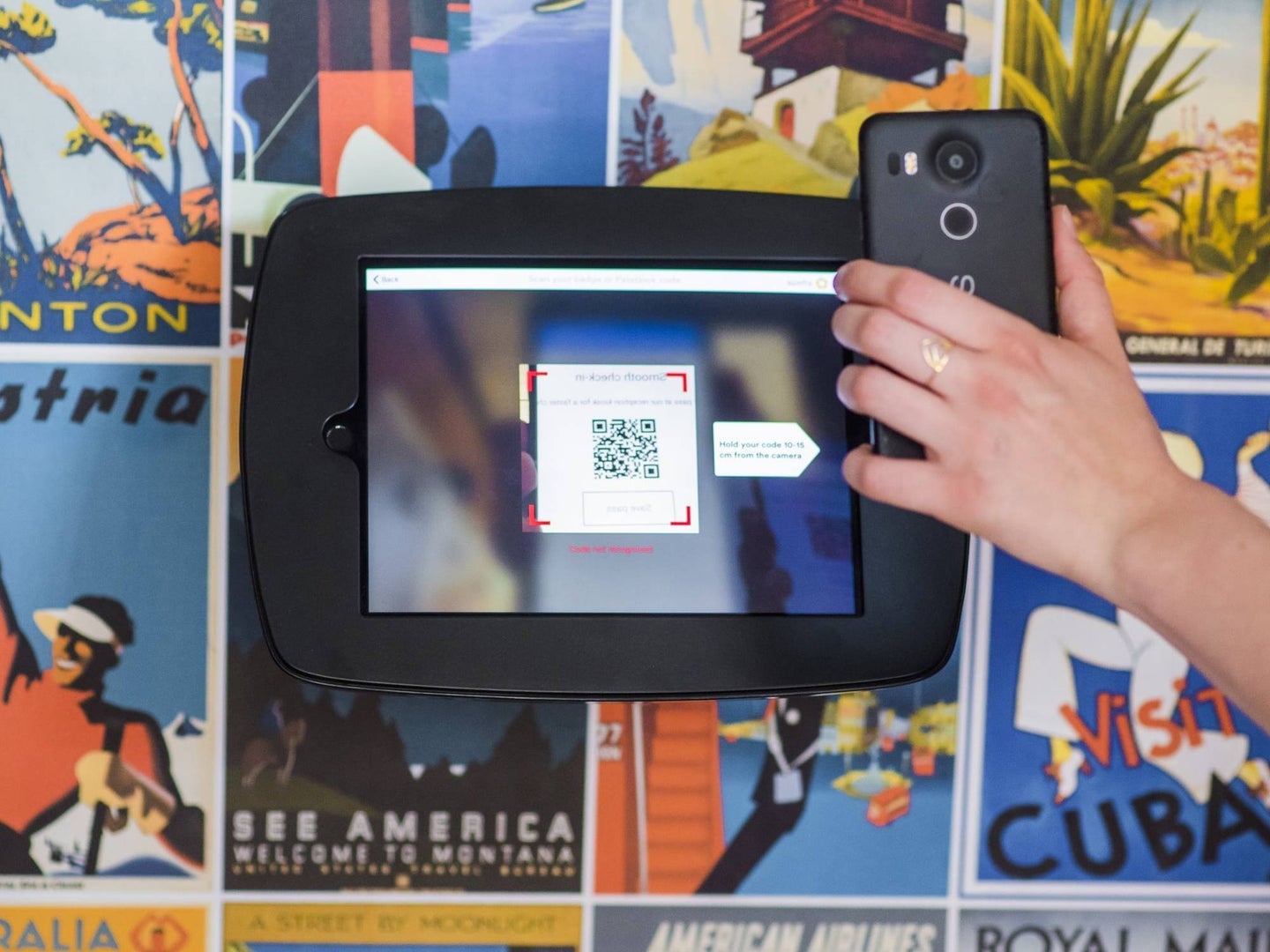QR codes are a smart way to share your image library. Here’s how to make your own.
Never spell out your Wi-Fi password again.

This story originally featured on Popular Science.
Quick Response or QR codes were popular even before the coronavirus pandemic, but now they’re everywhere: from restaurant menus and tickets, to billboards and adverts.
These square codes are quick and easy to use, and since Android and iOS users can scan QR codes with their phone’s default camera, people don’t need any special software or update to make use of your code. On top of that, QR codes require no physical contact for you to interact with them, so it’s not surprising that they’re now taking off.
If you’ve ever wanted to make your own QR codes, know that it doesn’t require any great degree of technical know-how or a huge amount of time. You just need the right app and the content you want to encode, which will be formatted differently depending on how you’re using the black and white pattern.
What you can do with QR codes
QR codes can store around 4,000 characters of text, which can be anything from a plain message to a link to follow or a file to download. These graphics are most commonly used to store website URLs, so people usually use them to redirect customers to their company website, their bar’s drinks list, or their new app.
But these patterns can do even more than that. You can encode your contact details in a QR code, for example, and print it on your business card. That way, every time someone scans it, all of the details you’ve shared will pop up in their default contacts app, ready to be saved.
If you’re running a live gig venue, you could have a QR code printed on the bottom of posters advertising future shows, which will take people directly to the website where they can buy tickets.
[Related: 500px portfolios are now free.]
On a more simple level, you might want to create a QR code that includes login details for the Wi-Fi network in your home or Airbnb rental. Guests could scan the code on entry, which would connect them up to the wireless internet without any need to search for a network name or input a password.
It only takes a minute to generate QR codes for these simple uses. There are more advanced ways to use these patterns, like logging directly into websites or apps, for example. They require some programming skill and specific coding, so if that’s what you want to do, you’ll need to do more digging.
How to make your own QR codes
Plenty of web and mobile apps will happily generate QR codes for you. There are no great differences between most, and to a certain extent, any of them will do for your QR code-generating needs.
QR Code Monkey is one of the slickest and most versatile options we’ve come across, supporting QR codes for websites, social media profiles, email addresses, Wi-Fi codes, app store links, and more. To get started, choose the type of content you want to embed into your QR code (text, link, or whatever), and the input fields will change accordingly. Put your data in the Enter content section, then click Create QR Code to generate the graphic.
The Set colors option lets you change the hues of the QR code, while under the Customize design heading you’re able to tweak the look of the barcode. The Add logo image section, meanwhile, lets you add your company logo in the center—this won’t affect the readability of the code, which will still scan as normal.
Use the slider underneath the QR code that you’ve generated to choose how big the finished graphic is going to be, then click Download PNG to save it to your disk. You can then use the code wherever you like, for free—it won’t have an expiry date.
For serious commercial use, you can find more advanced QR code makers. Take a look at QR Code Generator, for example, which starts at €120 euros (about $145) a year. This is a steep price to pay, but for your money you get advanced graphic design features and analytics, including how many times people scan your QR code per day.
Plenty of mobile solutions are available as well. As with web apps, there’s a lot to choose from but we’ll just highlight QRbot for Android and iOS. The app is lightweight, simple to use, and it does double duty as an advanced QR code reader as well.
To create a new QR code through the app, tap Create and then choose the type of barcode you want to make. The app will prompt you to add the required information like the website URL or contact details, and your QR code will then appear on the screen. Tap PNG to save it. The QR code generator is free to use, though you can pay a one-off $7 fee to remove ads inside the app and get extra features including an unlimited number of QR code scans.